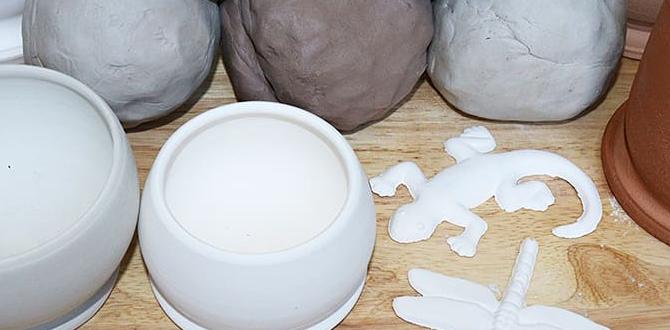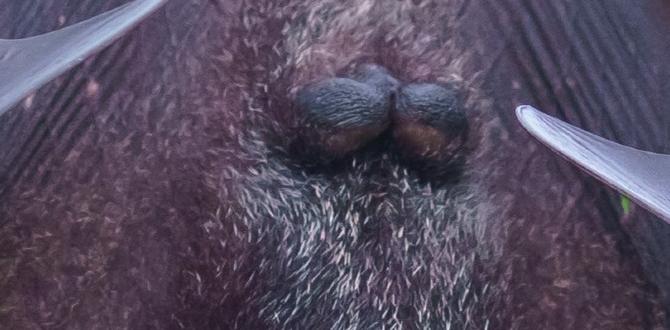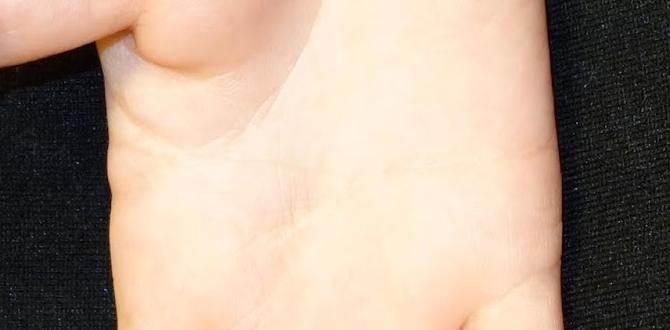Choosing the right baseball bat for adults is crucial for maximizing performance and enjoyment. This guide breaks down bat materials, sizes, and features, helping beginners and experienced players alike find the perfect bat for their swing, ensuring better hits and a more confident game on the field.
Baseball Bats For Adults: An Essential Buying Guide
Picking out your first adult baseball bat can feel a little overwhelming. You step up to the plate, and suddenly, there are so many options! It’s easy to get confused by all the terms, materials, and sizes. But don’t worry, finding the perfect bat doesn’t have to be a struggle. With a little guidance, you’ll be swinging with confidence in no time. We’re here to make this process simple, so you can focus on what really matters: enjoying the game and improving your swing.
This guide will walk you through everything you need to know, from understanding different bat materials to finding the right size and weight for you. We’ll demystify the jargon and help you make an informed decision. Ready to find your new favorite piece of equipment?
Why the Right Baseball Bat Matters
Your baseball bat is an extension of your swing. The right bat can make a noticeable difference in how well you hit the ball, how comfortable you feel at the plate, and even how much you enjoy playing. A bat that’s too heavy might make it hard to swing with speed, while one that’s too light could lead to less power behind your hits. Different materials also affect how the bat feels and sounds when you make contact.
For adult players, the transition to adult-sized bats is significant. You’re dealing with faster pitching and stronger competition. A bat that’s properly suited to your physical attributes and playing style can help you generate more bat speed, connect with the ball more consistently, and ultimately, have more success at the plate. It’s about finding that sweet spot where power meets control.
Understanding Baseball Bat Materials
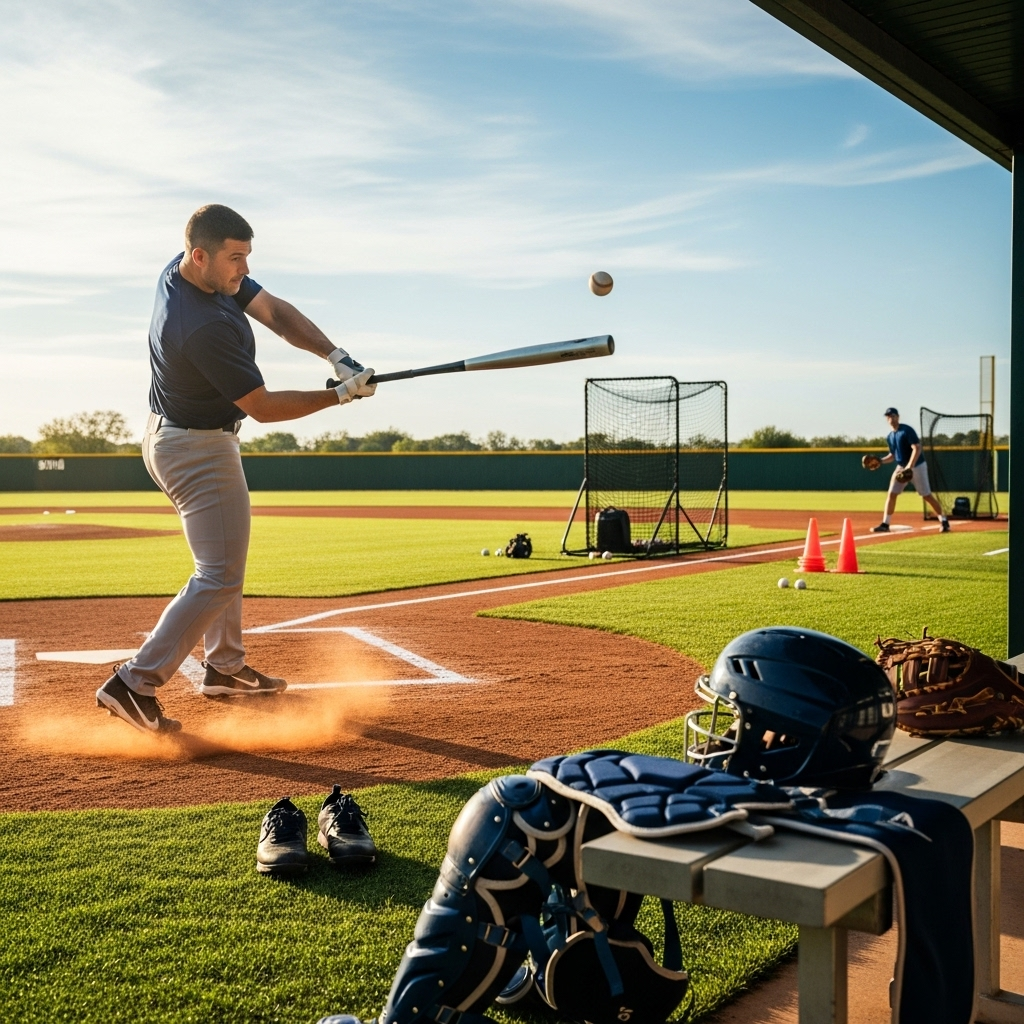
The material of a baseball bat significantly impacts its performance, feel, weight, and durability. Adult baseball bats are primarily made from aluminum alloys, composite materials, or wood. Each has its own set of pros and cons, catering to different player preferences and league regulations.
Aluminum and Alloy Bats
Aluminum and alloy bats are the most common choices for recreational leagues and many amateur play. They are known for their durability and performance right out of the wrapper, meaning they don’t typically require a “break-in” period. Alloy bats tend to have a thinner barrel wall, which can translate to a larger sweet spot and a higher exit velocity.
- Pros:
- Durable and long-lasting.
- Perform well immediately; no break-in period needed.
- Often more affordable than composite bats.
- Tend to have a larger sweet spot due to thinner barrel walls.
- Cons:
- Can lose some pop over time, especially after many hits or in cold weather.
- May have more vibration upon contact compared to composite or wood.
- Sound can be different (often a “ping”) than wood bats.
Composite Bats
Composite bats are made from high-tech carbon fiber materials. They are known for their light swing weight, large sweet spots, and trampoline-like effect on the ball, often resulting in higher exit velocities and farther hits. Composite bats usually require a break-in period, where consistent hitting on the barrel surface gradually softens the composite fibers, enhancing performance.
- Pros:
- Excellent performance with high trampoline effect (“pop”).
- Large sweet spots for more forgiveness on off-center hits.
- Lighter swing weight for many models, allowing for faster bat speed.
- Often have an excellent feel and reduced vibration.
- Cons:
- Require a break-in period; performance improves with use.
- Can be more expensive than alloy or wood bats.
- Performance can degrade in very cold temperatures.
- Some leagues have restrictions on composite bats if they don’t meet specific certification standards (like BBCOR).
Wood Bats
Wood bats are the standard for professional baseball leagues, including Major League Baseball (MLB). They are constructed from a single piece of wood, typically ash, maple, or birch. Wood bats offer a classic feel and require a different approach to hitting. They have a smaller sweet spot and demand more precise contact with the ball. While less forgiving than metal or composite, they build better swing mechanics and discipline.
- Pros:
- Traditional hitting feel and sound.
- Excellent for developing proper swing mechanics and hand-eye coordination.
- Smaller sweet spot teaches hitters to focus on making solid contact.
- No restrictions on their use in most leagues (always check local rules).
- Durable if cared for properly; can last a long time.
- Cons:
- Smaller sweet spot means less margin for error.
- Can break more easily than metal or composite bats, especially on mishits or impact with the ground.
- Require more careful handling and maintenance.
- No trampoline effect; ball speed is more dependent on bat speed and contact.
Understanding Baseball Bat Sizing and Weight
Choosing the correct size and weight of a baseball bat is arguably the most critical factor for adult players. The goal is to find a bat that allows you to swing with maximum bat speed while maintaining control and power. This is where the concepts of “drop weight” and “length” come into play.
Drop Weight (Length-to-Weight Ratio)
Drop weight is the difference between the length of the bat (in inches) and its weight (in ounces). It’s often represented as a negative number. For example, a 33-inch bat that weighs 30 ounces has a drop weight of -3 (33 – 30 = 3). This is one of the most important specifications you’ll see on adult bats, especially for non-wood bats.
General Guidelines for Drop Weight:
- -3 Drop: This is the standard for high school and college baseball (often with BBCOR certification). These bats are heavier and designed for players with developed strength.
- -5 to -8 Drop: Often used in youth leagues but can also be suitable for adult players who are still developing strength or prefer a lighter bat for faster swing speeds.
Bat Length
Bat length is another crucial measurement. A bat that is too long can be difficult to control and swing quickly, while a bat that is too short might limit your reach and power. The ideal length depends on the player’s height and reach.
Here’s a general sizing chart to help you determine the right length, assuming you’re looking at bats with a -3 drop weight, which is common for adult leagues:
| Player Height (inches) | Approximate Bat Length (inches) |
|---|---|
| 64″ – 66″ (5’4″ – 5’6″) | 31″ |
| 66″ – 68″ (5’6″ – 5’8″) | 32″ |
| 68″ – 70″ (5’8″ – 5’10”) | 33″ |
| 70″ – 72″ (5’10” – 6’0″) | 33″ or 34″ |
| 72″+ (6’0″ and up) | 34″ |
How to Measure for Bat Length:
- Stand the bat on its knob next to your leg.
- Extend your arm straight out to your side, parallel to the ground.
- If you can comfortably reach the end of the bat with your fingertips (without having to adjust your grip or stretch awkwardly), the length is likely correct.
Bat Weight
Weight is directly related to the drop weight. For adult leagues, especially those requiring BBCOR certification, bats are typically heavier. For players who can handle it, a heavier bat can translate to more power. However, swing speed is king. The fastest swing speed with good control will always be more effective than a slow, telegraphed swing with a bat that’s too heavy.
Finding Your Ideal Weight:
The best way to find the right weight is through practice. Pick up bats of different weights and swing them. You should be able to swing the bat quickly and maintain control without faltering. A good rule of thumb is to choose the heaviest bat you can swing comfortably and effectively for multiple swings without tiring quickly.
A common test is to hold the bat horizontally at arm’s length. If you can hold it there for 30-45 seconds without significant strain, it’s likely a good weight for you. If you struggle, it’s too heavy. If it feels exceptionally light, you might be able to handle more weight for increased power.
Understanding Bat Certifications
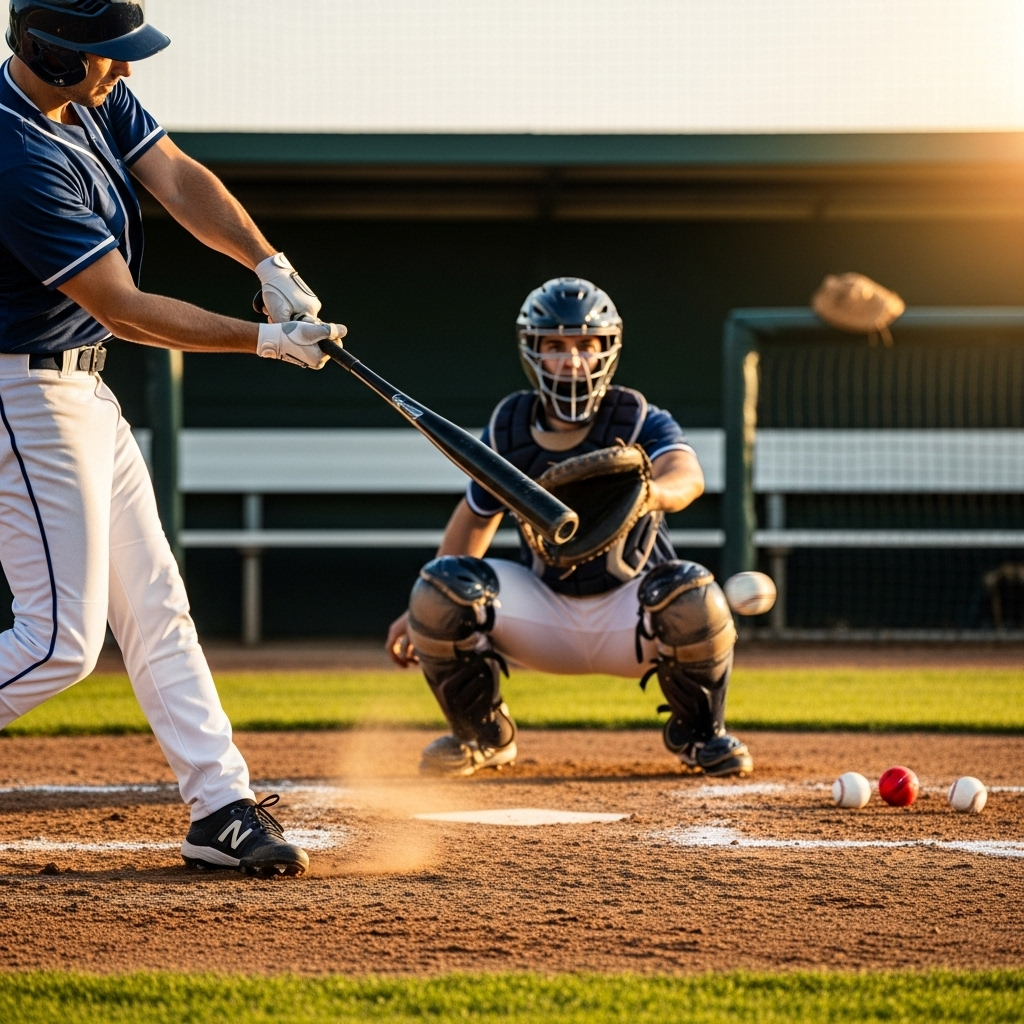
Baseball bats, especially for organized leagues, must meet certain performance standards. These standards are dictated by governing bodies to ensure fair play and to regulate the trampoline effect (the amount of energy transferred from the bat to the ball). The most common certifications you’ll encounter for adult baseball are:
BBCOR (Batted Ball Coefficient of Restitution)
This is the most important certification for high school and college baseball in the United States. BBCOR bats are designed to mimic the performance of wood bats. They have a maximum drop weight of -3 and undergo rigorous testing to limit the trampoline effect. If you play high school or college baseball, you absolutely need a BBCOR-certified bat.
You’ll find the BBCOR certification stamp directly on the bat, usually near the handle or on the barrel.
USABat Standard
This standard is for youth baseball leagues governed by USA Baseball. While typically for younger players, some adult amateur leagues might reference it. It’s a different performance standard than BBCOR.
USSSA (United States Specialty Sports Association)
USSSA governs many adult amateur leagues. Bats used in these leagues will often carry a USSSA stamp of approval, indicating they meet the specific performance standards for those leagues. While many USSSA-adult leagues use -3 BBCOR bats, some may allow bats with lighter drop weights and different performance characteristics.
Always check with your league’s official rules to confirm which certifications and specifications are required for bats.
Bat Construction: One-Piece vs. Two-Piece Designs
Beyond the material, how a bat is constructed also plays a role in its feel and performance. The two main construction types are one-piece and two-piece bats.
One-Piece Bats
These bats are made from a single piece of material, whether it’s aluminum, composite, or wood. A one-piece bat offers a stiffer feel upon contact. This stiffness can translate to good energy transfer and power, as very little energy is absorbed by the bat itself upon impact. However, this rigidity can also mean more vibration travels up the handle to the hitter’s hands.
- Pros:
- Stiffer feel for maximum energy transfer.
- Can offer a more direct response upon contact.
- Often more durable due to simpler construction.
- Cons:
- Can transmit more vibration to the hands.
- Less forgiving on off-center hits.
- Some players find them less comfortable.
Two-Piece Bats
Two-piece bats consist of two parts: the barrel and the handle, which are joined together, usually with a special connector or by bonding the materials. This construction allows manufacturers to tune the feel and performance of each piece independently. The primary benefit of a two-piece design is that the connector helps to absorb vibration, leading to a smoother feel for the hitter.
- Pros:
- Reduced vibration for a more comfortable swing.
- Can offer a larger sweet spot.
- Often provide a more balanced feel, leading to faster swing speeds.
- Manufacturers can optimize performance of both barrel and handle.
- Cons:
- The connection point is a potential weak spot for durability.
- Can sometimes feel less “connected” to the ball than a one-piece bat.
- May be slightly more expensive.
The Batting Swing and Bat Selection
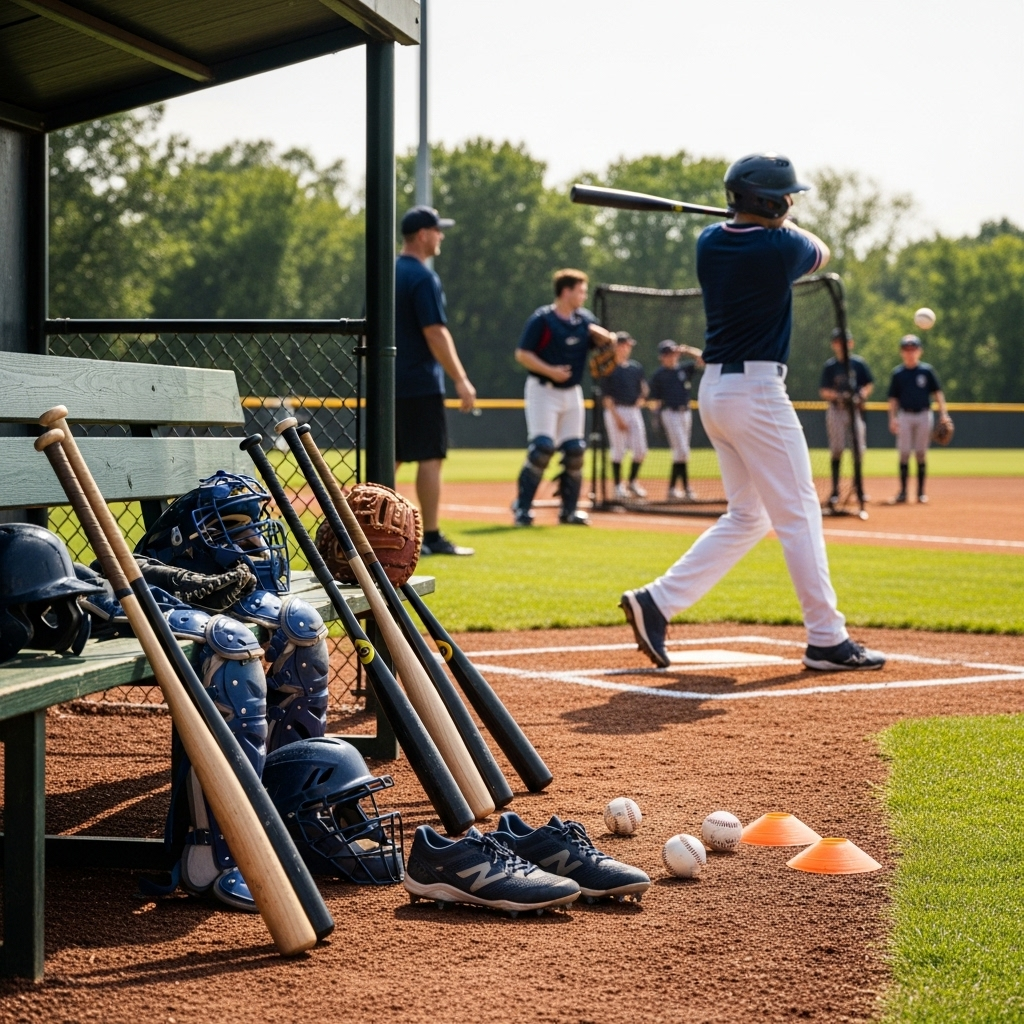
Your individual batting style and physical capabilities should heavily influence your bat choice. For example, a power hitter might prefer a slightly heavier bat, possibly with a more end-loaded feel (meaning more weight is distributed towards the end of the barrel), to maximize the force of their swing. Conversely, a contact hitter who prioritizes getting on base might opt for a lighter bat with a good balance for quicker bat speed and better control.
Consider what kind of hitter you are:
- Power Hitter: Focuses on driving the ball for extra bases and home runs. Might benefit from a heavier bat (potentially with a larger barrel or a slightly more end-loaded feel) to maximize impact.
- Contact Hitter: Prioritizes making solid contact, hitting for average, and moving runners. Often benefits from a lighter, more balanced bat for faster bat speed and better control.
- All-Around Hitter: A blend of power and contact. Needs a versatile bat that can deliver both. Many players find a balanced, one-piece alloy or a well-balanced two-piece composite bat suits this style.
It’s also helpful to think about the pitching you’ll be facing. If you’re dealing with consistently fast pitching, a lighter bat that allows for quicker bat speed might be more advantageous. If the pitching is slower, you might be able to get away with a slightly heavier bat to generate more power.
Where to Buy Your Baseball Bat
You have several options when it comes to purchasing a baseball bat. Each has its advantages:
- Sporting Goods Stores: These stores offer the advantage of being able to physically hold and swing bats before buying. Staff may also be knowledgeable and able to offer personalized advice.
- Online Retailers: Offer a wider selection and often competitive pricing. It’s important to buy from reputable sites that offer good return policies, especially if you haven’t tried the bat before.
- Team Dealers/Specialty Shops: These can be excellent resources for high-quality gear and expert advice, often catering specifically to serious players and teams.
No matter where you buy, always check the bat’s warranty and return policy. This is especially important for composite bats that require a break-in period, as sometimes a manufacturing defect isn’t immediately obvious.
Bat Care and Maintenance
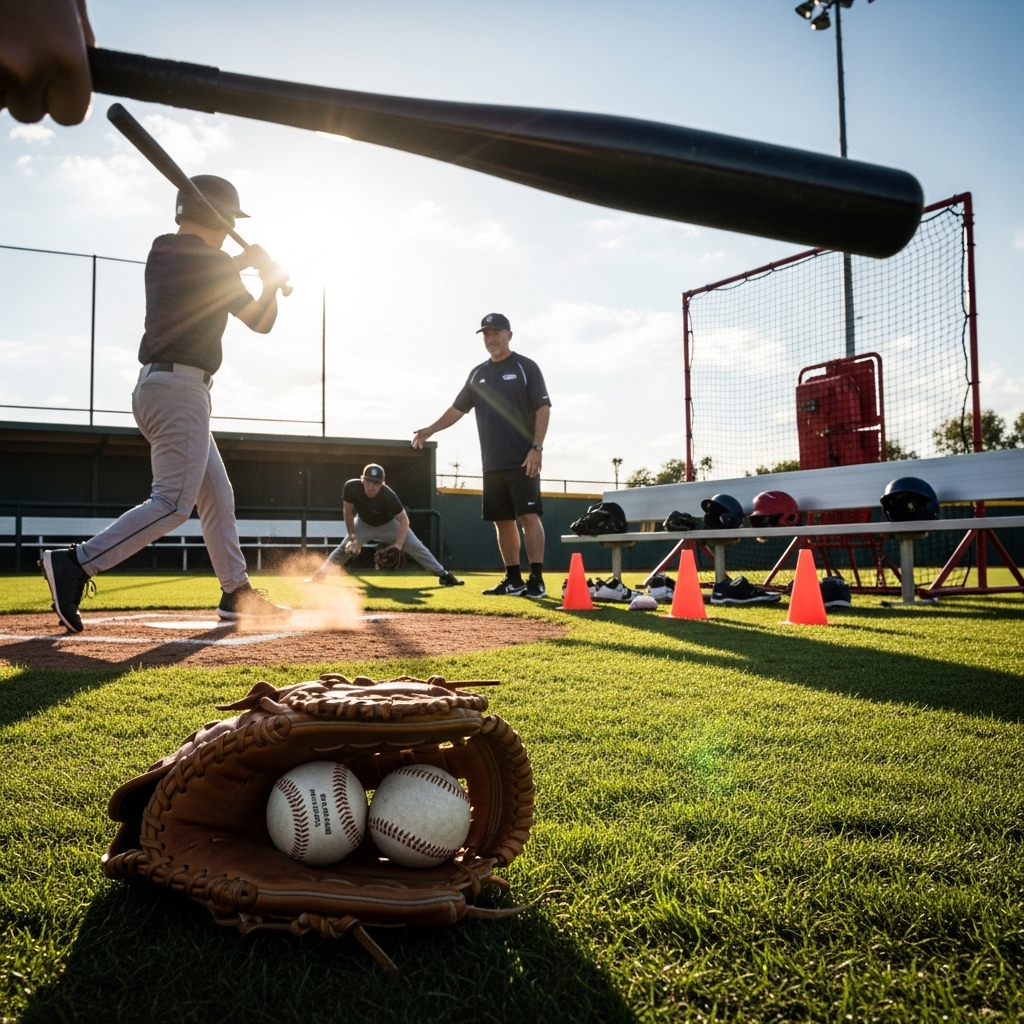
To get the most out of your baseball bat and ensure its longevity, proper care is essential:
- Avoid Extreme Temperatures: Especially for composite bats, avoid using or storing them in extreme cold or heat. Cold can make composite bats brittle, and excessive heat can damage the resin.
- Use as Intended: Baseball bats are designed for hitting baseballs. Do not use them for batting practice balls (like dimpled golf balls or Wiffle balls), or as levers, or for anything other than hitting baseballs.
- Rotate Your Bat: When hitting off a tee or in soft toss, rotate the bat a quarter turn after each swing. This helps to distribute the wear evenly around the barrel and maintain consistent pop.
- Inspect Regularly: After each use, inspect your bat for any cracks, dents, or loose components, especially the connection point on two-piece bats.
- Storage: Store your bats in a cool, dry place away from direct sunlight.
For wood bats, avoid hitting off hard surfaces, and be mindful of moisture. Maple bats are generally more resistant to splintering than ash, but both can be sensitive to impact and weather.
Learning More About Baseball Equipment
The world of baseball equipment is vast. Understanding how different pieces of gear work together can help you improve your game. For instance, a good understanding of baseball gloves and mitts is just as important for fielding as a good bat is for hitting. Organizations like Major League Baseball provide extensive resources for players, coaches, and fans.
The USSSA is a great resource for finding league information and equipment standards if you play in one of their affiliated leagues. For those interested in the physics of the game and equipment performance, resources related to sports science or engineering might

